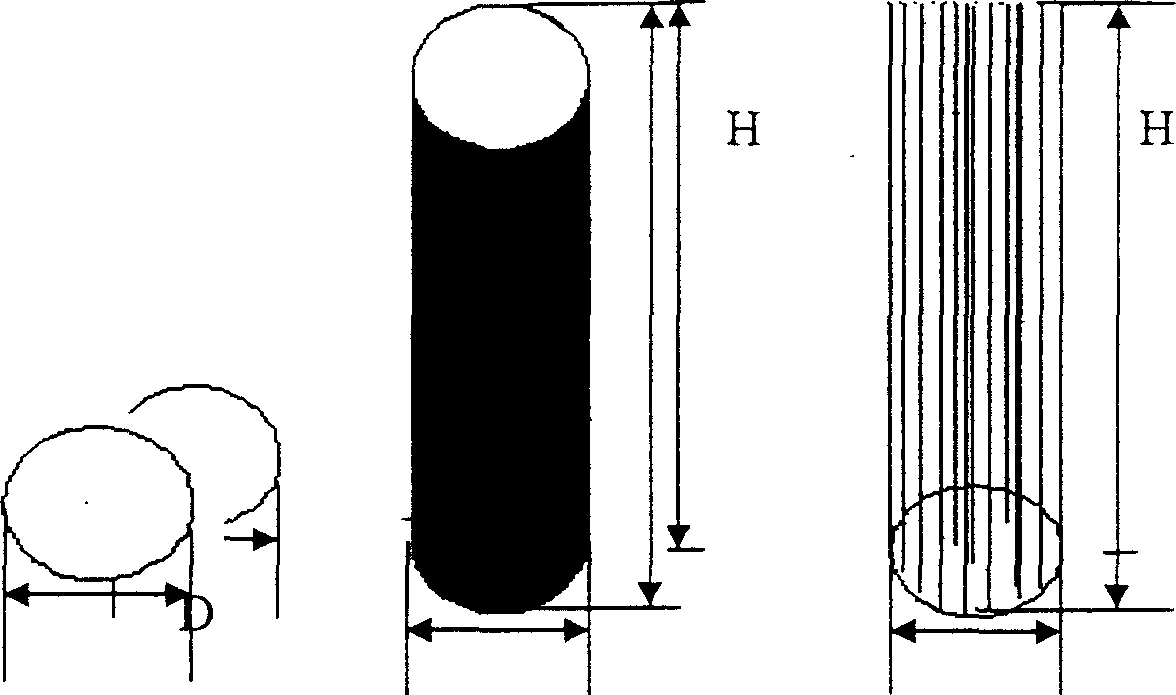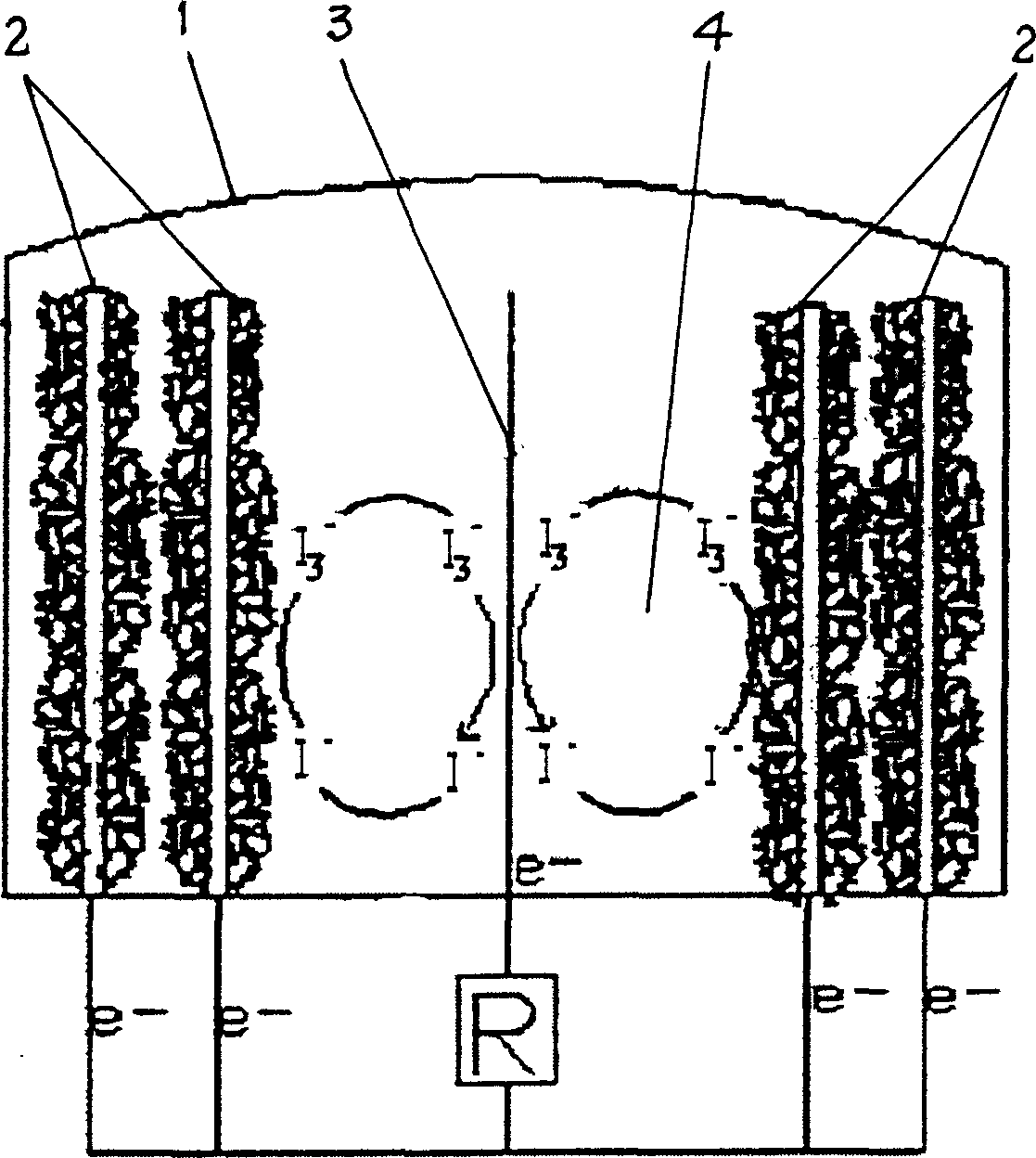Stereo absorption filament integrated dye sensitization solar cell
A technology of solar cells and dye sensitization, applied in the field of solar cells, can solve the problems of low efficiency and low solar energy utilization efficiency, and achieve the effects of reducing internal resistance, high efficiency and convenient application, and improving efficiency
- Summary
- Abstract
- Description
- Claims
- Application Information
AI Technical Summary
Problems solved by technology
Method used
Image
Examples
Embodiment 1
[0022] Put 12 grams of commercial nano-titanium dioxide P25 powder produced by Germany Degussa company into a mortar and grind it, and add 4 ml of isopropanol solution containing 10% acetylacetone drop by drop, then add 10 ml of water drop by drop to continue grinding, and add 0.2 ml Triton X-100 was added to the suspension to prepare a titanium oxide sol with a concentration of 54.54%.
[0023] 230 titanium wires with a diameter of 100 μm and a length of 7 cm were coated with a 30 μm thick titanium oxide film at a pulling speed of 10 mm per second by the pulling method, and about 1 cm of titanium wire was reserved as a conductive electrode. Heat treatment for 30 minutes.
[0024] Put the coated titanium wire into the 3×10 -5 In the ethanol solution of molar N719 ruthenium organic dye, warm to 80°C and soak for 3 hours, take it out, wash it with ethanol, and store it in a dry and dark environment.
[0025] Use 100μm copper wire to wrap around the photoanode of reserved titan...
Embodiment 2
[0029] Mix 125mL of isopropyl titanate and 20mL of isopropanol evenly, put it into a separatory funnel, add dropwise to 750mL of deionized water containing 5.3mL of 70% nitric acid within ten minutes and stir vigorously. Continue to stir for 8 hours to form transparent nano-TiO 2 colloid solution, and then put it into a high-temperature and high-pressure reactor at a temperature of 200 ° C for 12 hours to react at a constant temperature, and the prepared nano-TiO 2 The sol was concentrated by rotary evaporation to a concentration of 45% TiO 2 Sol.
[0030] 70 nickel wires with a diameter of 100 μm and a length of 11 cm were plated with a 25 μm thick titanium oxide film at a pulling speed of 10 mm per second by the pulling method, and a nickel wire of about 1 cm was reserved as a conductive electrode. Heat treatment for 30 minutes.
[0031] Put the coated nickel wire into the 5×10 -5 mol / L N719 ruthenium organic dye ethanol solution, placed at room temperature for 72 hours, c...
PUM
| Property | Measurement | Unit |
|---|---|---|
| The inside diameter of | aaaaa | aaaaa |
Abstract
Description
Claims
Application Information
 Login to View More
Login to View More - R&D
- Intellectual Property
- Life Sciences
- Materials
- Tech Scout
- Unparalleled Data Quality
- Higher Quality Content
- 60% Fewer Hallucinations
Browse by: Latest US Patents, China's latest patents, Technical Efficacy Thesaurus, Application Domain, Technology Topic, Popular Technical Reports.
© 2025 PatSnap. All rights reserved.Legal|Privacy policy|Modern Slavery Act Transparency Statement|Sitemap|About US| Contact US: help@patsnap.com



